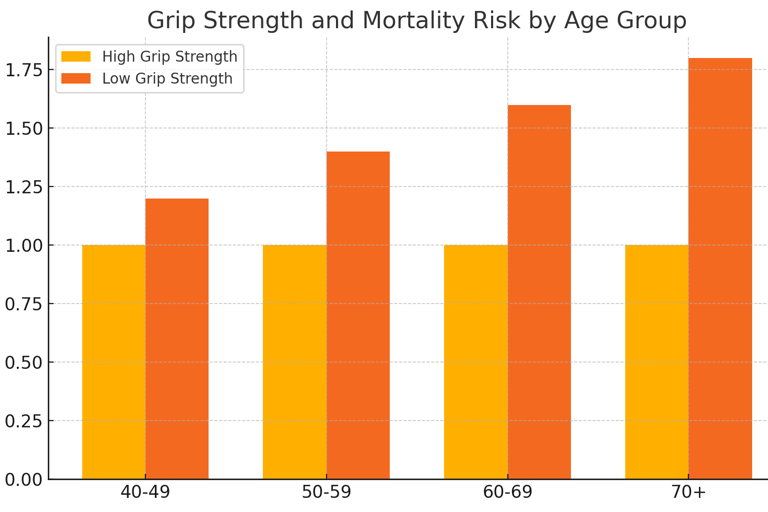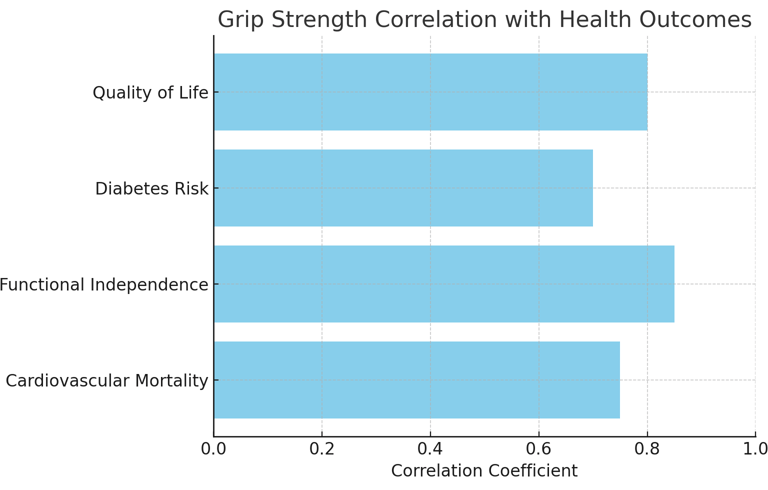Grip Strength: The Underrated Lifespan Predictor You Shouldn't Ignore
In this evidence-based blog, we explore why grip strength is more than just a test of physical power — it’s a proven indicator of overall health, longevity, and functional aging. Learn how your handshake could be a window into your biological age, discover what the science says, and get practical tips to improve your grip strength and extend your healthspan.
by Dr. Ari Sahebkashaf - The Longevity Lab MD
4/17/20253 min read


Why Grip Strength Matters
Grip strength isn’t just about opening stubborn jars or carrying heavy groceries. It’s actually a proxy for overall muscle strength, which in turn reflects how resilient your body is—especially as you age.
A large-scale study published in JAMA followed over 6,000 healthy men between ages 45–68. It found that those with weaker grip strength were significantly more likely to become disabled 25 years later compared to those with stronger grips. That’s a staggering time window—your midlife strength can predict your quality of life decades down the road.
→ JAMA Study
But it doesn’t stop there.
Grip Strength Predicts More Than Muscle
A meta-analysis in Clinical Interventions in Aging found that lower grip strength is linked to a higher risk of:
Cardiovascular disease
Certain cancers
Hospitalizations
And yes—early death.
In fact, in some studies, grip strength was a better predictor of cardiovascular mortality than blood pressure.
→ Cochrane Review
Let that sink in: a simple hand dynamometer may tell us more about your risk of dying from heart disease than your systolic BP reading.
Grip and Quality of Life Go Hand in Hand
We often think of strength in terms of performance—but what about purpose?
A recent 2024 paper in Scientific Reports found a strong correlation between grip strength and reported quality of life, especially in social and environmental domains. The stronger the grip, the more likely someone was to feel engaged in life, confident in their surroundings, and socially active.
→ Scientific Reports, 2024
This makes sense when you consider how strength and independence go hand in hand. We grip to lift, cook, clean, play with our kids, or help a loved one out of bed.
What Weak Grip Really Tells Us
So why is grip strength so powerful as a biomarker?
It reflects several critical pillars of health:
Muscle Mass – Especially of the upper body and forearms.
Bone Density – Strength training improves both.
Metabolic Health – Muscle is a glucose sink; the more you have, the better your insulin sensitivity.
Neuro-Muscular Coordination – Grip relies on both muscle and nerve function, hinting at neurological vitality.
Inflammation & Frailty – Declining grip strength is often one of the first signs of frailty and sarcopenia (muscle loss with aging).
How to Improve Your Grip Strength (and Your Healthspan)
You don’t need fancy tools or a gym membership to get started. Here's how to build it back up:
🏋️♂️ Resistance Training
Focus on exercises that naturally train grip, like deadlifts, pull-ups, rows, or kettlebell swings.
🤲 Grip-Specific Tools
Try hand grippers, squeeze balls, or even carrying heavy groceries or buckets (“farmer’s carries”).
🧗♂️ Playful Functional Activities
Rock climbing, gardening, martial arts, or even monkey bars can all boost grip while keeping things fun.
⏱️ Stay Consistent
2–3 short sessions a week are more than enough to see measurable results in a month.
Final Thoughts
Longevity isn’t just about living longer—it’s about living better. Grip strength is a remarkably simple, reliable, and low-cost marker that gives us real insight into how resilient and functional we are, now and in the years ahead.
So the next time someone offers a handshake, remember—it might be more than just a greeting. It might be a glimpse into your future.
📚 References:






